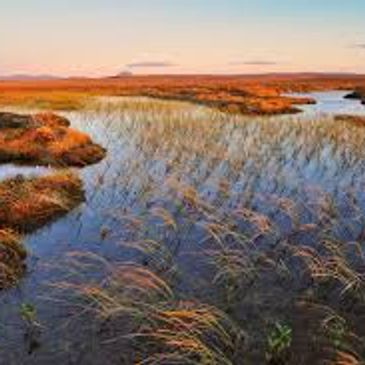The importance of going Peat Free

Peat Free
Alternatives
Alternatives
Why Peat-Free Matters
Peat bogs may seem like an endless resource, but they’re among the most carbon-rich and fragile ecosystems on Earth. Although they cover just 3% of the planet (around 12% in the UK), peatlands store more than twice as much carbon as all the world’s forests combined.
Yet for decades, peat has been extracted for use in c
Why Peat-Free Matters
Peat bogs may seem like an endless resource, but they’re among the most carbon-rich and fragile ecosystems on Earth. Although they cover just 3% of the planet (around 12% in the UK), peatlands store more than twice as much carbon as all the world’s forests combined.
Yet for decades, peat has been extracted for use in compost and soil mixes—especially in gardening and landscaping. The problem? Peat takes thousands of years to form, but we’re using it far faster than it can regenerate. In just the past 50 years, more than a third of global peatland has been lost.
Draining and digging up these bogs releases massive amounts of greenhouse gases—equivalent to around 10% of all fossil fuel emissions each year. In the UK, over 80% of peatland has already been damaged. Even when it’s not harvested directly, peatland is often drained for agriculture, which leads to soil erosion and the slow loss of this precious material—1 to 2 cm a year, with each centimetre taking more than a decade to return naturally.
The Shift to Peat-Free
Awareness is growing. Between 2018 and 2019, peat use in the UK dropped by 2.3%. But interest in gardening surged during the COVID-19 lockdowns, and peat consumption unfortunately rose by 9%.
That’s why choosing peat-free compost—especially when planting trees—is such an important step. It protects carbon-storing peatlands, reduces emissions, and helps preserve biodiversity. The good news? There are excellent alternatives available, and using them doesn’t mean compromising on plant health or growth

Alternatives
Alternatives
Alternatives
What to Use Instead
Switching to peat-free compost doesn’t mean sacrificing quality or plant success—especially when growing trees. In fact, many peat-free alternatives offer excellent structure, drainage, and nutrients, all without the environmental cost.
Here are some of the best options:
🌱 Coir (Coconut Fibre)
Made from the husks of cocon
What to Use Instead
Switching to peat-free compost doesn’t mean sacrificing quality or plant success—especially when growing trees. In fact, many peat-free alternatives offer excellent structure, drainage, and nutrients, all without the environmental cost.
Here are some of the best options:
🌱 Coir (Coconut Fibre)
Made from the husks of coconuts, coir is a popular peat-free base. It retains moisture well, promotes healthy root development, and is lightweight. However, it’s often low in nutrients, so it works best when blended with composted materials or supplemented with organic feed.
🍂 Composted Bark
This woody material improves structure and drainage, making it ideal for tree roots that don’t like waterlogged conditions. It’s usually mixed with other organic matter to create a balanced growing medium.
🌾 Green Waste Compost
Produced from garden and food waste, green compost is rich in nutrients and a sustainable choice when sourced responsibly. It’s often used in combination with loam or sand for better texture and drainage.
🪵 Wood Fibre & Fine Bark
Increasingly common in peat-free mixes, these materials provide good aeration and help maintain structure over time. They’re particularly useful in compost for larger containers and tree planting.
🌍 Loam-Based Mixes
Loam (a mix of sand, silt, and clay) adds weight and stability to compost—especially helpful for growing young trees that need firm support. Look for peat-free John Innes-style mixes or similar formulations.

Our Products
Alternatives
Our Products
Leading the Way: Growing Trees the Peat-Free Way
vguio;
At West Coast Trees, we’re proud to be the first peat-free tree nursery in Scotland.
For us, going peat-free isn’t just a sustainable option—it’s central to who we are. Every tree we grow is nurtured in a carefully developed, 100% peat-free growing mix that supports strong root develop
Leading the Way: Growing Trees the Peat-Free Way
vguio;
At West Coast Trees, we’re proud to be the first peat-free tree nursery in Scotland.
For us, going peat-free isn’t just a sustainable option—it’s central to who we are. Every tree we grow is nurtured in a carefully developed, 100% peat-free growing mix that supports strong root development and long-term health, without compromising on quality.
We made the decision early on to stop using peat, knowing the environmental cost of continuing with business as usual. It took experimentation, adaptation, and collaboration with suppliers to create growing media that met our standards—but the results speak for themselves. Our trees thrive, our soils stay healthy, and our impact on the planet is dramatically reduced.
By choosing trees from West Coast Trees, you're not only getting robust, healthy plants—you’re also helping protect some of the most fragile ecosystems on Earth. Whether you're rewilding, restoring landscapes, or planting in your own garden, peat-free trees are a small change that makes a big difference.